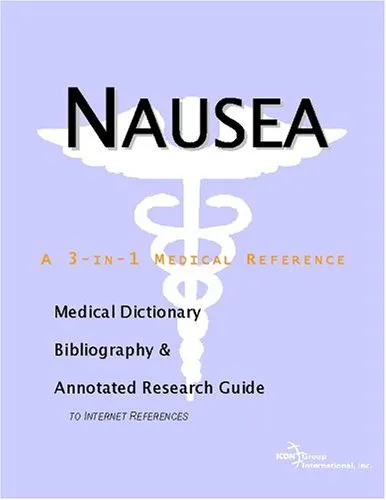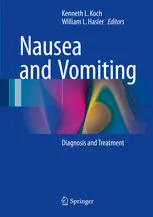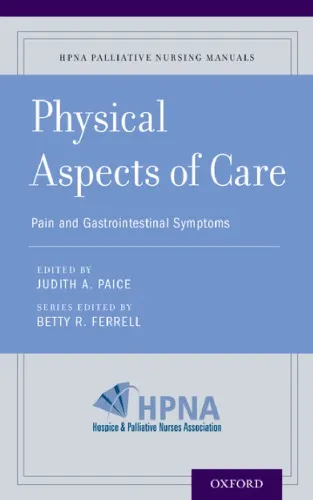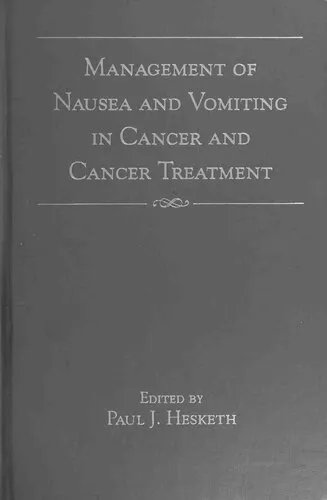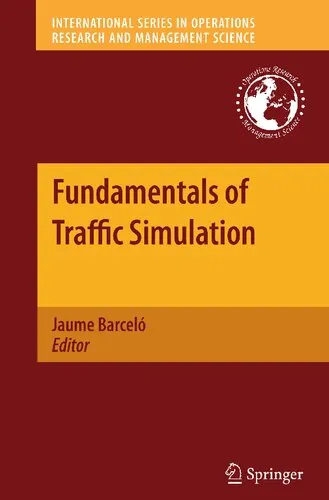Nausea: Mechanisms and Management
4.2
Reviews from our users

You Can Ask your questions from this book's AI after Login
Each download or ask from book AI costs 2 points. To earn more free points, please visit the Points Guide Page and complete some valuable actions.Related Refrences:
Welcome to an in-depth exploration of one of the most pervasive yet understudied symptoms in the medical field: nausea. In our book, 'Nausea: Mechanisms and Management,' we aim to provide a comprehensive guide to understanding this complex condition. From its physiological mechanisms to effective management strategies, this book serves as a crucial resource for clinicians, researchers, and anyone interested in the intricacies of this common yet debilitating symptom.
Detailed Summary of the Book
Nausea is a multifaceted symptom that can significantly impact an individual's quality of life. Our book is meticulously structured to provide insight into the biochemical and neurological pathways that lead to nausea. We delve into the etiology and pathophysiology of nausea, offering a scientific exploration of how it is triggered in various clinical scenarios, including pregnancy, chemotherapy, and gastrointestinal disorders.
We further explore diagnostic approaches and discuss innovative techniques to measure and quantify nausea's intensity and frequency. Additionally, our book evaluates conventional and alternative therapeutic strategies, ranging from pharmacological treatments to cognitive-behavioral interventions. By integrating research findings and clinical expertise, we aim to present a holistic view of nausea that bridges the gap between theory and practice.
Key Takeaways
-
Nausea is not merely a symptom but a complex condition that requires a multidimensional approach to understand and manage effectively.
-
The physiological mechanisms of nausea involve complex interactions between the central and peripheral nervous systems, emphasizing the need for targeted treatment strategies.
-
Our approach combines both traditional pharmacological methods and emerging non-pharmacological strategies, encouraging a more personalized treatment plan for patients.
-
Advancements in research have opened new avenues for assessing nausea, including the development of novel diagnostic tools and scales.
Famous Quotes from the Book
"Understanding nausea goes beyond managing it; it necessitates a journey into the human body's profound response systems."
"In tackling nausea, we aim not only to alleviate a symptom but to restore comfort and dignity to the patient's experience."
Why This Book Matters
Nausea is a symptom that transcends specific conditions, affecting individuals across diverse medical landscapes. Despite its prevalence, it often remains inadequately addressed in clinical practice. This book fills a critical gap by providing a robust foundation of knowledge and a practical framework for managing nausea effectively. Healthcare professionals, researchers, and students will find valuable insights that equip them with the tools needed to enhance patient care. Our goal is to elevate nausea's status from a peripheral symptom to a central focus, deserving of the same detailed attention as any other significant medical condition.
The interdisciplinary approach taken in 'Nausea: Mechanisms and Management' also breaks down silos between different areas of medicine, suggesting collaborative opportunities for improved outcomes. By fostering a deeper understanding, the book champions patient-centered care and underscored the importance of considering the patient's entire experience rather than just isolated symptoms.
Free Direct Download
You Can Download this book after Login
Accessing books through legal platforms and public libraries not only supports the rights of authors and publishers but also contributes to the sustainability of reading culture. Before downloading, please take a moment to consider these options.
Find this book on other platforms:
WorldCat helps you find books in libraries worldwide.
See ratings, reviews, and discussions on Goodreads.
Find and buy rare or used books on AbeBooks.
1475
بازدید4.2
امتیاز0
نظر98%
رضایتReviews:
4.2
Based on 0 users review
Questions & Answers
Ask questions about this book or help others by answering
No questions yet. Be the first to ask!



